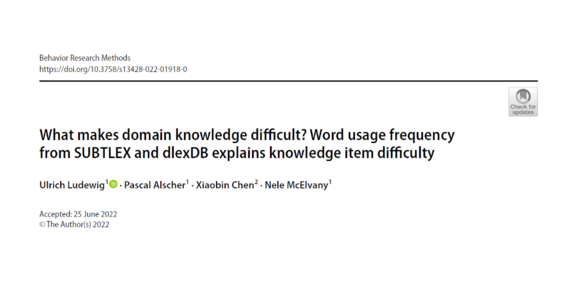New journal article published in Behavior Research Methods
- News
- International
- Publications

The quality of tests in psychological and educational assessment is of great scholarly and public interest. Item difficulty models are vital to generating test result interpretations based on evidence. A major determining factor of item difficulty in knowledge tests is the opportunity to learn about the facts and concepts in question. Knowledge is mainly conveyed through language. Exposure to language associated with facts and concepts might be an indicator of the opportunity to learn. Thus, the researchers hypothesize that item difficulty in knowledge tests should be related to the probability of exposure to the item content in everyday life and/or academic settings and therefore also to word frequency. Results from a study with 99 political knowledge test items administered to N = 250 German seventh (age: 11–14 years) and tenth (age: 15–18 years) graders showed that word frequencies in everyday settings (SUBTLEX-DE) explain variance in item difficulty, while word frequencies in academic settings (dlexDB) alone do not. However, both types of word frequency combined explain a considerable amount of the variance in item difficulty. Items with words that are more frequent in both settings and, in particular, relatively frequent in everyday settings are easier. High word frequencies and relatively higher word frequency in everyday settings could be associated with higher probability of exposure, conceptual complexity, and better readability of item content. Examining word frequency from different language settings can help researchers investigate test score interpretations and is a useful tool for predicting item difficulty and refining knowledge test items.






